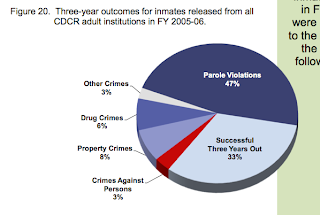Today, a diverse coalition of organizations, including the Innocence Project, the Campaign for the Fair Sentencing of Youth, the Constitution Project, the National Association of Criminal Defense Lawyers, the Brennan Center for Justice at New York University, and Families Against Mandatory Minimums, has released a comprehensive report titled Smart on Crime: Recommendations for the Administration and Congress.
We will read and assess the recommendations, but for now, here are some tidbits from the press release:
In its review of virtually every major criminal justice issue—from overcriminalization to forensic science—from juvenile justice to the death penalty—and from indigent defense to executive clemency— the report serves as both a source of information and a spur to action for the Administration and Congress.
Just two days before the release of the Smart on Crime report, Senator Jim Webb (D-VA) reintroduced the National Criminal Justice Commission Act which would “create a blue-ribbon, bipartisan commission of experts charged with undertaking an 18-month top-to-bottom review” of the nation’s criminal justice system and offering concrete recommendations for reform. The establishment of such a commission is among the major recommendations of the report.
Virginia Sloan, President of The Constitution Project, said about Smart on Crime, “The criminal justice system is supposed to be about justice—for victims, for those rightly and wrongly accused and convicted of crimes, and for all of us. But a system that costs too much and makes so many mistakes provides justice for no one. Smart on Crime contains an ever-increasing and bipartisan consensus on how to fix the problems that have for too long plagued the system.”
In addition to its recommendation that a National Criminal Justice Commission be formed, the report—developed and published by the Smart on Crime Coalition, a group of more than 40 bipartisan organizations and individuals—offers nearly 100 detailed policy recommendations across 16 criminal justice areas. While contributors do not necessarily have positions on each issue addressed, there was universal agreement that the current system—with its rampant cost, inefficiency, and injustices—is in urgent need of reform.
“Overcriminalization of federal law threatens every American’s liberty and drains the public coffers with pointless prosecutions and unnecessary incarcerations,” said Norman Reimer, Executive Director of the National Association of Criminal Defense Lawyers. “We urge every elected official to end the madness that has produced over 4,450 federal criminal statutes, and countless tens of thousands more arising from the unchecked power of regulatory authorities.”
A Smart on Crime Web site was also created to provide policy-makers, media and the public with quick and easy access to the report. In addition, visitors to besmartoncrime.org can hear report contributors share their insights on criminal justice system problems and solutions in videotaped interviews.
It is interesting that the report comes out, with references to Jim Webb, just as Webb announced that he will not run for another term.





